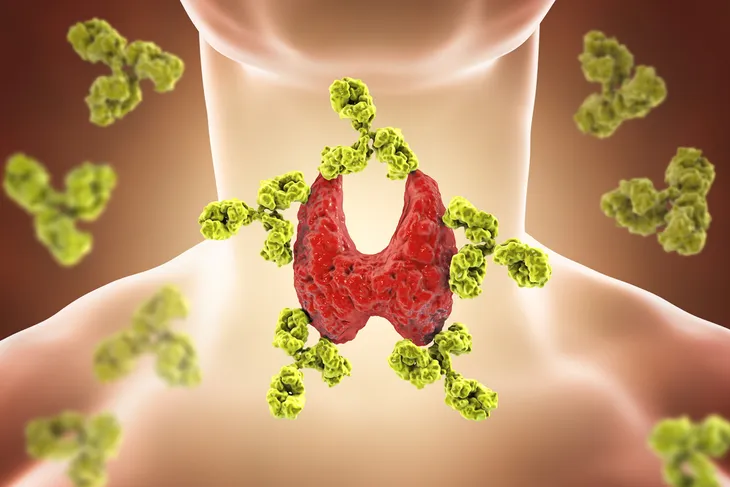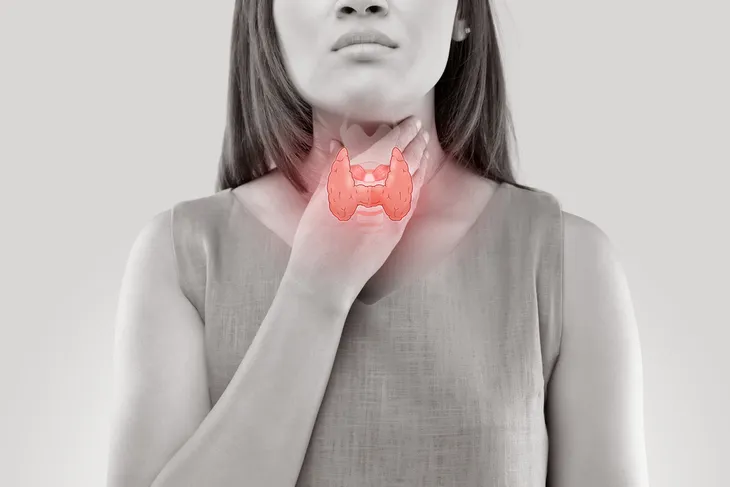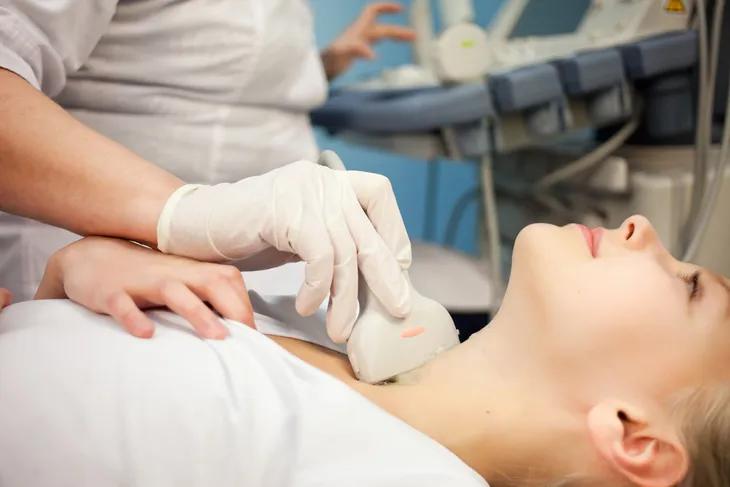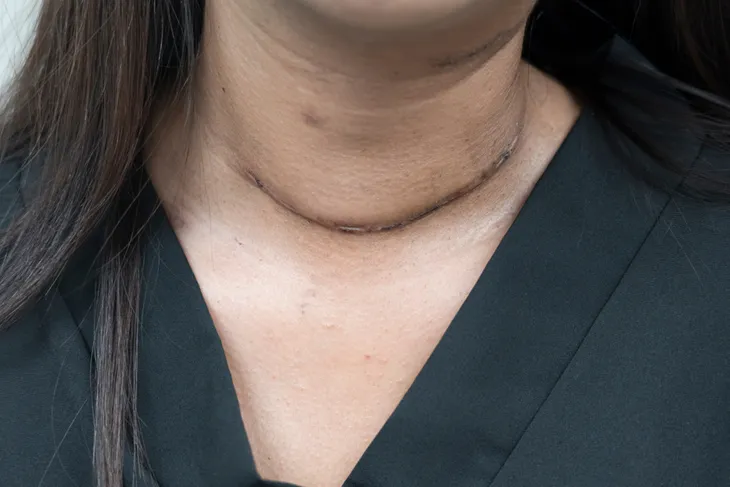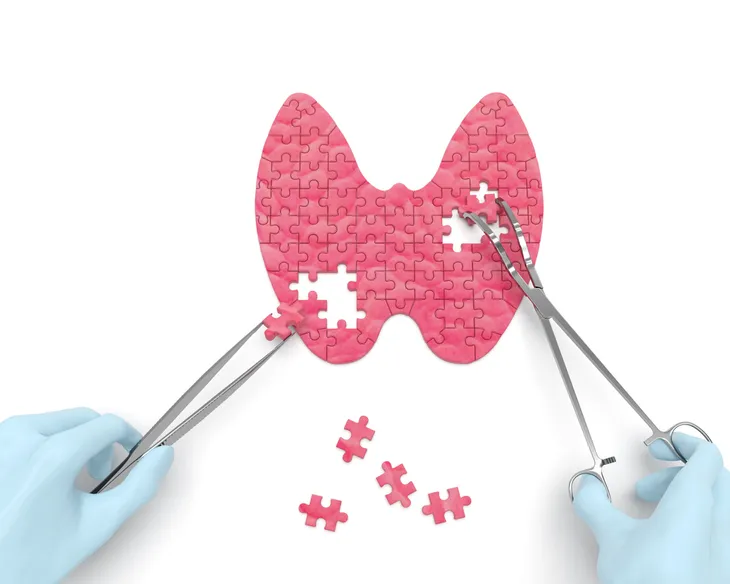Thyroid problems affect millions of women in North America each year. And yet we still don’t know a lot about these kinds of problems. For most people, the thyroid largely remains a mystery, which many North Americans virtually unaware of its existence, location in the body, or its role and how it can affect our health.
In actuality, the thyroid is contained in the neck, just below the larynx in women (in front of the Adam’s apple in men) and just above the trachea. From the front of your throat, the thyroid plays a role in producing many of the hormones which directly impact how our body functions; for example, the body’s metabolism, which can dictate how much energy you have and how fast your body burns off calories and fat. For these reasons, a dysfunctional thyroid can present an individual with serious health issues, so it’s worth having a full understanding of the thyroid and all it’s capable of.
Thyroid Disease is Serious
Now that we’ve established how important the thyroid is in determining how and when vital hormones are released into the body, let’s take a look at once of the most critical health problems affecting this area: thyroid disease.
Generally speaking, thyroid disease results in the thyroid gland behaving in a way it should not: for example, it may release too many hormones or not enough. The result can be feeling excessively tired, gaining or losing weight (despite eating less or more to compensate). One may even find that they notice changes in the appearance of their hair, nails, or skin.
Thyroid Problems Can Affect Anyone
Many of the most frightening conditions, like cancer, heart disease, and stroke, tend to impact older adults. But middle-age and even much younger people are not spared the chance of developing these critical illnesses which have the potential to completely devastate lives and change lifestyles forever.
Unfortunately, thyroid disease is no different. It can strike women who are older but it can also impact women in their twenties, thirties, and forties. At first, the effects may be minimal, enough to go unnoticed by women busy with their families and professional lives. Eventually, however, some of the more critical symptoms tend to overwhelm the body and lead an individual to seek medical help.
Middle-Age Women Most Affected
Although thyroid disease can affect women of just about any age, there is one group that’s most likely to receive a thyroid disease diagnosis. Perhaps surprisingly, that age group most likely to be affected by thyroid disease is not women over age 65 — in fact, it’s women in the prime of their lives.
According to most experts, the age group of women most likely to receive a thyroid disease diagnosis is women aged 30 to 60 — in other words, women who are just starting their careers, women who are enjoying building a life with their growing families, and women entering the upper echelons of their organizations. For that reason, it can be difficult to detect the symptoms of thyroid disease and take action towards a diagnosis and treatment.
Thyroid Disease More Common in Women
Like a few other conditions, such as breast cancer, thyroid disease is far more likely to affect women than men. It’s believed this has to do with the role in which hormones play in the daily life of women compared to men.
Women with thyroid disease may notice a growth on the gland. The good news is that the vast majority of these growths are benign, meaning they may appear similar to a tumor but don’t actually contain cancerous cells. Additionally, a growing focus on the thyroid and associated health issues means medical experts are now able to detect and diagnose thyroid disease, which includes separating nonmalignant from malignant growths, much earlier and faster than ever before.
Thyroid Disease Can be Managed
While being told that the growth on your thyroid is cancerous can and should be very scary, it’s important to note that there are a wide variety of strategies for effectively treating this condition. Even if the cancer spreads from the thyroid area to the surrounding lymph nodes, physicians have found that it’s possible to effectively treat the problem.
Survival rates after a thyroid diagnosis vary greatly upon the stage and type of thyroid cancer. Some 5 year survival rates are 90-percent or better, according to the American Cancer Society. It’s important to note that 5 year survival rates don’t take everything into account. Each person will have a unique experience with their thyroid cancer diagnosis.
How Thyroid Cancer is Diagnosed
A doctor will start their exam by feeling around the base of the neck and throat, where the thyroid is located. Should a woman notice any kind of lump that seems out of place or new, it’s important they make an appointment to see their family doctor soon.
Upon visiting their physician and discussing the issue with them, an individual can expect to undergo a brief exam that, should it concern the doctor, may result in an x-ray or CT scan being ordered. A physician may also order blood work. An ultrasound can ultimately show a lot about the presence and growth of any concerning lumps on the thyroid. In combination with other evidence collected from scans and blood work, a biopsy may be performed to determine if the lump is malignant or nonmalignant.
Next Steps for Thyroid Concerns
Should your physician agree that a lump you’ve discovered on your throat is worth monitoring, they may go one of two routes. First, if the growth is quite small, they may choose to wait, order a few less invasive tests, like blood work, and have you return for a follow-up exam within a month or so.
However, if the growth is larger and more alarming for your physician, they will use a fine needle to take a cell sample of the area. This will allow them to examine the thyroid gland cells under a microscope and gain a better idea of the extent of the issue. If they detect cancer, more invasive tests will be ordered. Thankfully, only 2 to 3 in 20 thyroid nodules are cancerous, says the American Cancer Society.
Thyroid Disease Surgery
If you’ve had a health problem that required extensive treatment in the past, you’re probably familiar with the idea that, in most cases, surgery is a last resort (except, perhaps, if you ask a surgeon).
But if thyroid disease, like cancer, is detected in the area surrounding the glands, surgery may be the primary treatment option. In fact, in cases where there is a sufficient amount of cancerous cells surrounding the thyroid and lymph nodes, the recommendation may be to remove the entire thyroid and any surrounding tissue affected by the growth of cancer cells. Because these kinds of cells tend to grow rapidly, the surgery may be scheduled earlier than expected.
Following Thyroid Surgery
Should surgery be recommended and the thyroid is removed — along with any impacted lymph nodes — the patient will be required to take special medication that helps their body generate the hormones typically released by the thyroid gland. Should any cancer cells linger following the surgery, radioactive iodine will be used to bring about their elimination.
It’s worth noting that surgery to remove the thyroid is a highly invasive procedure that can leave a noticeable scar on the throat. Many survivors of thyroid disease choose to leave the scar as it is. However, there is an option to carry out the procedure going through the mouth instead of from outside the body. This procedure has a good chance of leaving no scars behind. If that seems preferable, discussion the option with your physician and surgeon beforehand.
Scarless Thyroidectomy, or Scarless Thyroid Surgery
In the past, individuals whose doctors had diagnosed them with thyroid cancer would undergo an invasive surgery that, once complete, tended to leave a large, noticeable scar on the through. However, a growing number of surgeons are offering a somewhat less invasive procedure called scarless thyroidectomy, or scarless thyroid surgery, which typically leaves no scar behind.
This is because the surgeon carries out the removal of cancer cells, and possibly the entire thyroid, by entering the body through the mouth. The procedure initially gained popularity in Asia and has grown in availability in the West in recent years. Today, many North American surgeons are capable of carrying it out.
Recovering From Thyroid Cancer Surgery
Being told by your surgeon or family doctor that a surgical procedure to remove cancerous cells from the thyroid (or the thyroid itself) was a great success should elicit feelings of excitement. But it’s important to keep in mind that the recovery following any type of surgery can be long and in the case of thyroid surgery, which directly impacts the throat, it may be particularly lengthy and difficult.
Additionally, the medication prescribed to help replace the hormones produced by a removed thyroid gland could take several weeks or even longer to take effect. That could make for a difficult recovery that makes returning to everyday activities, like going outside or heading to work, nearly impossible. Patience is the key.
Treatment for Hyperthyroidism
Should your doctor discover that your thyroid issue is not related to cancer but simply involves the thyroid acting in an erratic and problematic way, they may diagnose you with hyperthyroidism. In cases where a patient reports struggling with exhaustion, weight issues, or other problems related to thyroid activity, this is often the diagnosis.
Treatment options for hyperthyroidism are antithyroid medications, radioactive iodine, and surgery. You and your physician will decide which option is best for your situation.

